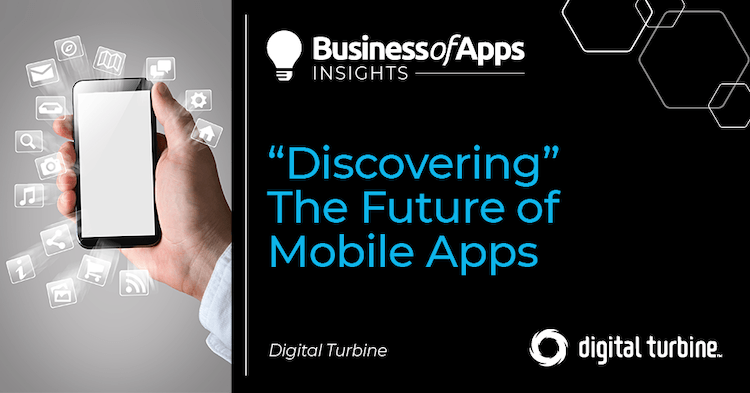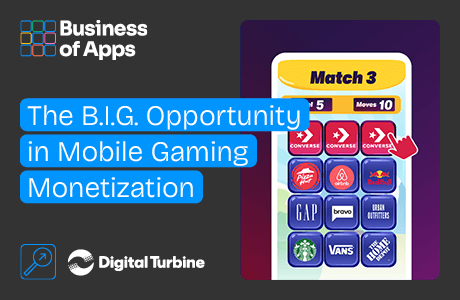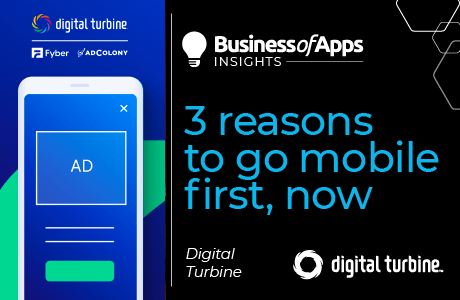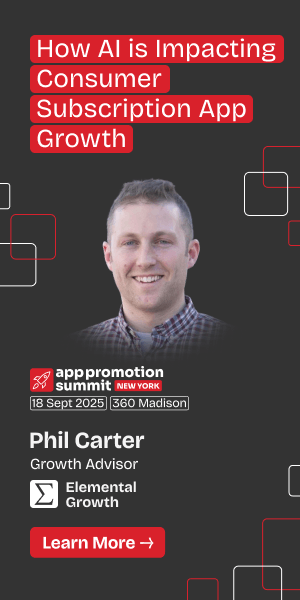
Smartphone behavior has thoroughly transformed our lives over the past decade. The devices, however, have been slower to evolve. When you pull out your phone today, you’ll basically see the same thing you saw a decade ago – a sea of icons.
For a device that we open up hundreds of times a day to stay connected to the people we love and the world around us, the smartphone seems to lack some, well, intelligence when you initially look at it. For app developers, this creates a challenge of standing out particularly as more apps crowd the market and our phones. But help could be on the horizon…
Let’s take a look at where things have evolved and where we are due for some changes.
Why discovery matters
Consider how a TV show might advertise themselves in 2021. The gold standard would be to get on the front page of Netflix as a top recommended show. There are also dozens of other places and spots you can be within Netflix’s interface that would help your show get discovered before others. If you could pay to be in these locations wouldn’t you shell out whatever you could?
This is why discovery matters. It’s not like Netflix doesn’t allow you to swipe around or type in a show name to find it – but they’ve figured out the best way to satisfy users is to help them find what they want NEXT. Compare this with the smartphone. Instead of trying to figure out what you might want next, phones let users figure it out for themselves. And that’s not a great user experience.
The early evolution of discovery
When the cell phone was first made, 100% of the time people used their phone, they knew exactly what they wanted to do with it – make or answer a call. Even when SMS texting, mobile email, and mobile internet browsing were enabled on phones, almost every single time people picked up their phone, people knew what they wanted to do. So while the need to discover was limited – with only a handful of things we could do on our phones – there was also little desire for a content & apps discovery mechanism because mobile users typically knew what they wanted when they used their phones.
Things started to change with the rise of Smartphones and apps in 2008 which expanded what you can do on devices – play games, connect on social media, shop, share photos, stream music, and discover digital content. With Smartphones becoming more important in our everyday lives, app developers and mobile platforms evolved the experience on devices by finding new ways to help consumers find content they like – through red bubbles, recommended content and apps, mobile offers, and push notifications to name a few.
The big consumer behavior change
In 2016, phones went from being important to an absolute life necessity once carriers started offering unlimited data plans and you could do most things on your phone. Without data limits and fears about facing bill shock at the end of the month, people started doing more on their phones. And application developers started pushing more consumer and business applications and experiences to mobile.
Reading the news every morning on a mobile device or scrolling social media mindlessly throughout the day was suddenly affordable, easy, familiar, and accessible. People developed the habit of pulling out their phones frequently, without having a particular reason to. In fact, 88% of consumers commonly pick up their smartphones without a particular app in mind.
With the number of things we did on a smartphone increasing, it wasn’t long until our phones not only became filled with apps, and also those aforementioned bubbles and notifications. Now, the fight for user attention clutters our mobile interfaces and serves as a reminder that we largely have been trained to ignore or avoid most attempts to capture our attention.
The discovery challenge
All this means is that despite having a device people open constantly without knowing what they want, finding what they want is a challenge. And so the consumer is set to swipe, tap, and type to discover something (anything) they might want. Going back to our Netflix example, the avid TV show watcher would be frustrated by those hoops just to find their next great binge-watching experience.
The good news is that there have been some subtle changes in recent years that have made a difference in how people discover content and apps on their Smartphones:
1. Voice Search.
Siri on iOS and Bixby on Android now enable hands-free discovery of apps and content. This has resulted in 44% of people using voice search to find information at least twice a week.
2. Apple’s Discoverability improvements
With the iOS 14 update, the iPhone has automatically started organizing apps into categories to make it easier for users to find what they’re looking for. In addition, users can now swipe right to see suggested content and apps based on their typical behavior.
3. Android Widgets
Not to be outdone, Android has also improved discovery on their interface. Android widgets are “at-a-glance” views of what might be waiting for a user inside an app that’s visible on the home screen. Apple has also recently started supporting homescreen widgets for easier discovery for users.
4. Preloaded Apps and Other On-Device Solutions
As mobile advertising grows more sophisticated, brands and app developers now have better options than push notifications or red bubbles to reach consumers directly on their devices. A mobile user can see apps and content recommended to them right on their device screen, or as they swipe left, right, up, or down
The future of mobile discovery
While those point solutions have helped some, there’s still a bigger evolution awaiting to go from the sea of icons to something groundbreaking when it comes to helping users discover what they want.
Going back to the Netflix experience, picking up a phone should become on par with that: where users are faced with personalized suggestions the moment they pull up the service interface—all of them tailored to their specific interests. For app developers, this would give them a myriad of paid and organic opportunities to get their app in front of interested users much like a TV Show would on Netflix.
Then, instead of seeing a sea of icons on un-lock, through predictive AI smartphones could proactively offer content recommendations based on your typical behavior. You see a new article about your favorite sport or your favorite crossword puzzle that you do every morning. Or if you are looking for something new, it could give you recommendations for a new travel app to book your next vacation or a new game similar to the ones you usually play on your commute.
Your phone could learn to show you what you want, before you even know it exists. And if it can be that much easier for interested mobile users to find your content — that’s a win for everyone.










